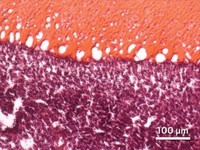Advertisement
Grab your lab coat. Let's get started
Welcome!
Welcome!
Create an account below to get 6 C&EN articles per month, receive newsletters and more - all free.
It seems this is your first time logging in online. Please enter the following information to continue.
As an ACS member you automatically get access to this site. All we need is few more details to create your reading experience.
Not you? Sign in with a different account.
Not you? Sign in with a different account.
ERROR 1
ERROR 1
ERROR 2
ERROR 2
ERROR 2
ERROR 2
ERROR 2
Password and Confirm password must match.
If you have an ACS member number, please enter it here so we can link this account to your membership. (optional)
ERROR 2
ACS values your privacy. By submitting your information, you are gaining access to C&EN and subscribing to our weekly newsletter. We use the information you provide to make your reading experience better, and we will never sell your data to third party members.
Materials
Surgical Glue Repairs Vessels
Ultraviolet light activates adhesive strong enough to use in blood vessels and cardiac tissue
by Celia Henry Arnaud
January 13, 2014
| A version of this story appeared in
Volume 92, Issue 2

The adhesives currently used in surgical applications have many shortcomings. They wash away easily and may be toxic or only weakly adhesive. A team led by bioengineer Jeffrey M. Karp and cardiac surgeon Pedro J. del Nido of Harvard Medical School has developed a new surgical glue that avoids these problems (Sci. Transl. Med. 2014, DOI: 10.1126/scitranslmed.3006557). The new adhesive is made from a viscous, spreadable precursor to poly(glycerol sebacate acrylate). Exposing the material to ultraviolet light activates cross-linking between the acrylate groups to form a flexible polymer film. The precursor doesn’t immediately harden in blood and can adhere to wet tissue. Because the glue doesn’t polymerize or adhere until activated, patches coated with it can be repositioned as necessary until they are exposed to UV light. The adhesive is strong enough to withstand the high pressure in blood vessels and to close defects in blood vessels on its own. The researchers used the glue to attach prosthetic patches to repair heart and blood vessel defects in rats and pigs.





Join the conversation
Contact the reporter
Submit a Letter to the Editor for publication
Engage with us on Twitter